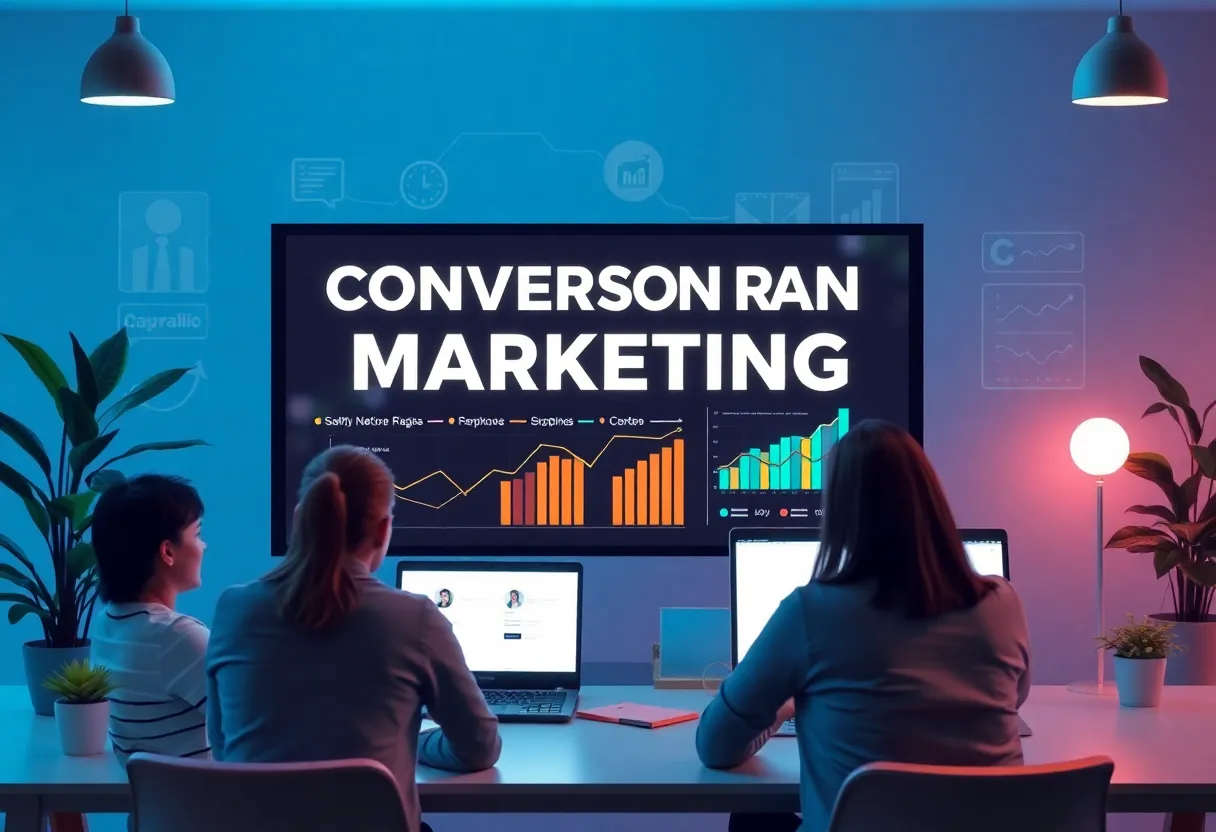How Can You Implement a Successful Conversion Rate Optimization Strategy in Digital Marketing?
In the ever-evolving realm of digital marketing, conversion rate optimization (CRO) stands as a critical pillar for maximizing online performance. A well-defined CRO strategy not only enhances user experiences but also drives profitability and growth. This detailed guide will illuminate the key elements necessary for implementing a successful CRO strategy.
Understanding Conversion Rate Optimization
At its core, CRO involves increasing the percentage of visitors to a website who take a desired action—be it completing a sale, signing up for a newsletter, or requesting more information. For businesses, understanding the nuances of CRO can lead to improved engagement and better overall results.
Establishing Clear Goals
Every effective CRO strategy begins with the establishment of clear and measurable goals. Define what constitutes a conversion for your business. This could involve:
- Sales transactions
- Lead generation
- Informational downloads
- Event registrations
Once goals are set, develop key performance indicators (KPIs) that will allow you to measure progress over time.
Conducting Comprehensive Data Analysis
Data lies at the heart of a successful CRO strategy. Use analytics tools to gather insights into user behavior. Examine key metrics such as:
- Current conversion rates
- Bounce rates
- User paths
- Exit pages
- Time spent on site
This data will help identify areas of your website that may require improvement and highlight opportunities for increasing conversions.
Identifying User Personas and Their Needs
Understanding your audience is essential for an effective CRO strategy. Create detailed user personas based on demographics, psychographics, and behavioral traits. This will help provide insights into:
- User motivations
- Buying habits
- Preferred content formats
By understanding these dynamics, you can tailor your digital marketing efforts to resonate with your audience effectively.
Optimizing User Experience (UX)
User experience is a critical factor influencing conversion rates. An intuitive, user-friendly design can significantly enhance engagement. Consider the following elements:
- Website Speed: Ensure that your website loads quickly. A delay can deter users and increase bounce rates.
- Mobile Optimization: With increasing numbers of users accessing sites via mobile, ensure your site is responsive.
- Clear Navigation: Simplify navigation to help users find information quickly.
- Appealing Design: Use an eye-catching, cohesive design that aligns with your brand identity.
Regularly assess and refine the user experience based on feedback and analytics data.
A/B Testing: A Crucial Component
A/B testing is a fundamental approach in CRO strategies. This method involves comparing two versions of a webpage to see which performs better. Follow these best practices:
- Test one element at a time (e.g., headings, buttons, colors).
- Use sufficient sample sizes to ensure reliability.
- Run tests long enough to collect meaningful data.
Even small changes can have significant impacts on conversion rates. Consistent testing informs future decisions.
Content that Converts
Quality content is a key factor in driving conversions. Ensure your messaging is clear, concise, and aligned with user expectations. Focus on:
- Value Proposition: Clearly articulate the benefits of your product or service.
- Call-to-Action (CTA): Use strong, persuasive CTAs that guide users toward taking action.
- User-Generated Content: Showcase reviews and testimonials to build trust.
Regularly update content to maintain relevance and engagement.
Leveraging Social Proof
Social proof can significantly boost conversion rates. Users are more likely to trust your brand if they see positive feedback from others. Consider implementing:
- Customer reviews and ratings
- Case studies showcasing successful use of your product or service
- Trust badges or certifications
This kind of validation enhances credibility and can drive more users to convert.
Utilizing Automation Tools
Automation plays a vital role in streamlining conversion rate optimization efforts. Use tools to:
- Track user behavior and segment audiences automatically.
- Run automatic A/B tests based on pre-set conditions.
- Send personalized email campaigns based on user interactions.
Such tools can free up valuable time while ensuring consistent engagement with your audience.
Continuous Learning and Adaptation
The digital landscape is constantly changing. A successful CRO strategy requires ongoing learning and adaptation. Regularly review and analyze:
- Performance data
- User feedback
- Market trends
Staying updated with industry changes allows you to pivot your strategy effectively and remain competitive.
Collaboration Across Teams
CRO is not a one-person show. Collaboration across various teams—be it marketing, web development, or sales—is crucial. Ensure consistent communication regarding:
- Goals and objectives
- User insights and feedback
- Results from testing and optimization efforts
A unified approach enhances the effectiveness of your CRO efforts.
Measuring Success
Evaluating the success of your CRO initiatives is critical. Track your KPIs regularly to ascertain if adjustments are needed. Key metrics to monitor include:
- Conversion rates over time
- Return on investment (ROI) from marketing efforts
- Customer acquisition costs
Identify patterns to determine what’s working and what requires further optimization.
Conclusion
Implementing a successful conversion rate optimization strategy in digital marketing requires a robust, data-driven approach. By establishing clear goals, analyzing user behavior, optimizing the user experience, conducting A/B tests, and continually adapting to changes, businesses can enhance their conversion rates significantly.
In this fast-paced digital landscape, understanding and addressing the needs of your target audience remains paramount. Through a combination of quality content, strategies that leverage social proof, and collaborative efforts across teams, organizations can position themselves for sustained growth and success.
Author: STAFF HERE Chapin
CHAPIN STAFF WRITER The CHAPIN STAFF WRITER represents the experienced team at HEREchapin.com, your go-to source for actionable local news and information in Chapin, Lexington County, and beyond. Specializing in "news you can use," we cover essential topics like product reviews for personal and business needs, local business directories, politics, real estate trends, neighborhood insights, and state news affecting the area—with deep expertise drawn from years of dedicated reporting and strong community input, including local press releases and business updates. We deliver top reporting on high-value events such as the Chapin Christmas Parade, Fourth of July Celebration, and the Chapin Fall Festival. Our coverage extends to key organizations like the Chapin Chamber of Commerce and the Lexington School District One, plus leading businesses in retail and recreation that power the local economy such as Lake Murray Tourism and the Chapin Visitor Information. As part of the broader HERE network, including HEREaiken.com, HEREbeaufort.com, HEREchapin.com, HEREcharleston.com, HEREclinton.com, HEREcolumbia.com, HEREgeorgetown.com, HEREgreenwood.com, HEREgreenville.com, HEREhiltonhead.com, HEREirmo.com, HEREmyrtlebeach.com, HEREnewberry.com, HERErockhill.com, HEREspartanburg.com, HEREaustin.com, HEREcollegestation.com, HEREdallas.com, HEREhouston.com, and HEREsanantonio.com, we provide comprehensive, credible insights into South Carolina's dynamic landscape.







